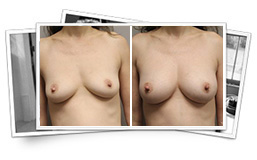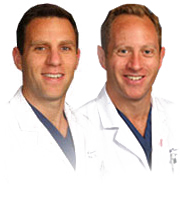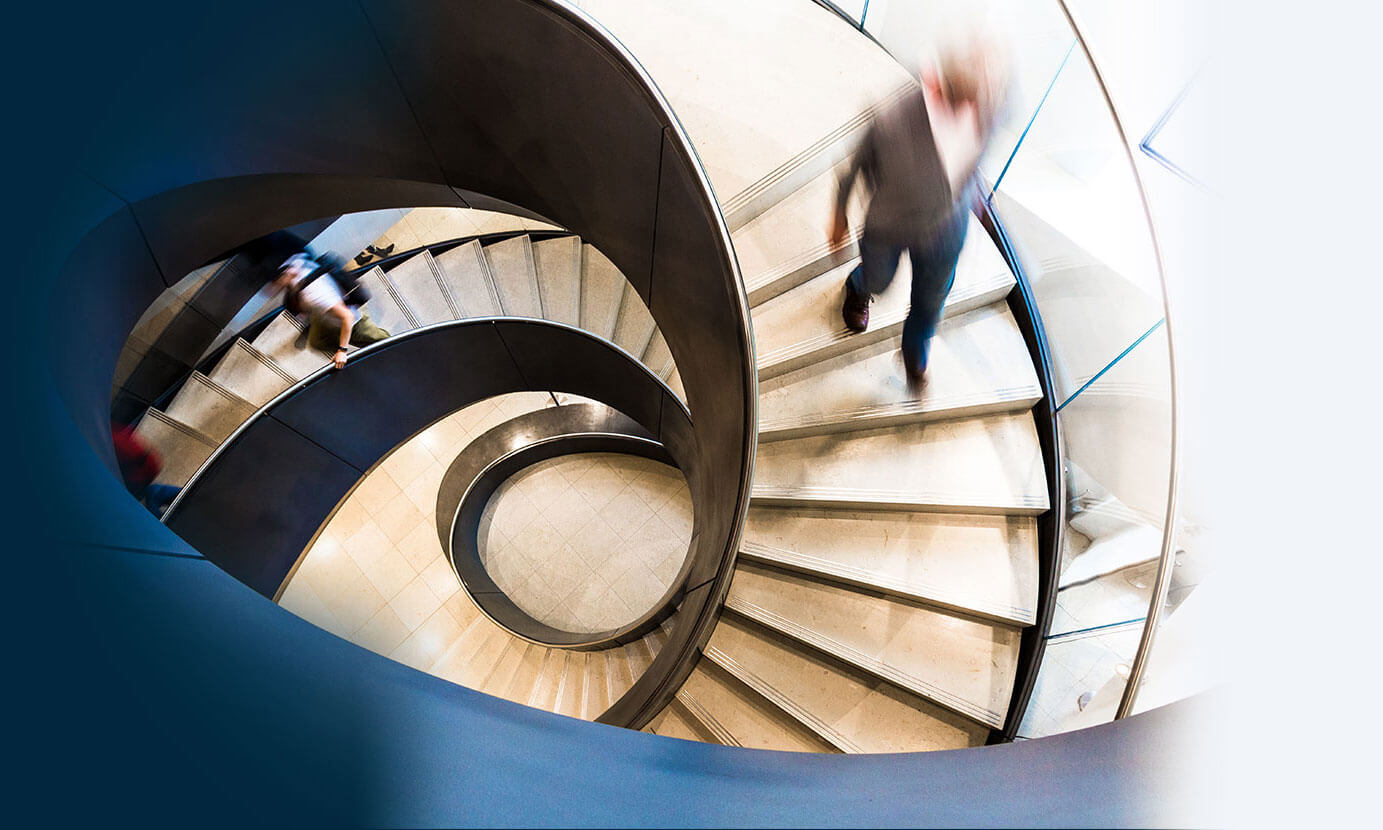Fat Grafting Thousand Oaks
Fat grafting is primarily done for augmentation of the breasts or buttocks (Brazilian butt lift). Fat can also be injected into any other part of the body to correct abnormal contours. Your own fat is harvested using liposuction from the hips, thighs, or abdomen. The fat is prepared using a technique pioneered by the Kryger Institute, and then it is then carefully injected into the recipient site.
Before & After Photos
 Fat Grafting to the Breast
Fat Grafting to the Breast
At the Kryger Institute of Plastic Surgery, we have experience in a vast array of surgical and non-surgical procedures. Click below to see some before and after photos of fat grafting to the breast.
Who is a good candidate?
Fat grafting is ideal for the patient who has a little too much fat in some areas (e.g. the thighs) and not enough in others (the buttocks). It is not suited for patients who are obese. It is also not ideal for patients who have a lot of loose excess skin, such as those who have lost massive amounts of weight.
Can Fat Grafting be combined with other procedures?
Absolutely. For example, fat grafting to the breasts can be done at the time of a breast lift. Fat grafting to the face is done at the time of most facelift procedures to enhance the results. Some procedures should not be done with fat grafting. For example, a tummytuck should not be done at the same time as fat grafting to the buttocks, since it is not ideal to put any pressure on the grafted area for two weeks. Patients undergoing a tummytuck, spend a lot of time sitting or lying down, and therefore these procedures should be done separately. In contrast, fat grafting to the breasts goes very well with a tummytuck, since there is no pressure on the breasts during the recovery period for the abdomen.
Is Fat Grafting covered by Insurance?
Insurance would cover fat grafting only in a number of special circumstances. Most commonly, fat grafting to the breast for purpose of reconstruction after breast cancer surgery would be covered by insurance. Fat grafting to various areas of the face in order to “fill in” areas that are abnormal due to injury or a disease process (e.g. after cancer surgery) can be covered by insurance.
Preparing for Surgery
Tell your surgeon about any medical problems you have, and any problems you may have had with surgery in the past. Inform him what medications you take-both prescription and non-prescription (including herbs and dietary supplements). You will be told which medications to stop and which to take before surgery. Aspirin and other blood thinners must be stopped for 7 days before surgery. You must also strictly follow the instructions about when to start fasting before surgery (usually at midnight). If you get sick or have any health issues in the days before surgery, please notify the office at once in case we have to postpone your operation. If you smoke, you should quit for 4 weeks before and 4 weeks after the surgery.
The Surgery and Incisions
The operation itself takes several hours. Fat grafting to the face can be done in an hour. Fat grafting to the breasts and buttocks (Brazilian Butt Lift) takes 2-3 hours. The morning of surgery, your surgeon will mark the sites to be suctioned and to be grafted, and will answer any last minute questions you may have. The incisions from liposuction are less than a quarter of an inch and quite inconspicuous. There will usually be 1-2 incision sites per site to be treated, however these are planned in such a way that they are barely visible. The grafting is also done without any obvious incisions.
What actually happens during surgery?
The fat is liposuctioned from the desired areas and trapped in a sterile canister. It is then carefully transferred to 10 cc syringes. These are spun sterily in a centrifuge. This separates the fat into three layers: oil, pure fat, fascia and water. Everything except the pure fat is removed, and then the fat is carefully injected into the recipient site.
Anesthesia
Fat grafting to the breasts or buttocks is performed under general anesthesia. Fat grafting to the face can be performed under “twilight” anesthesia or general anesthesia. Twilight anesthesia consists of intravenous sedation and pain medication that keeps you relaxed and sleepy during the surgery. In addition, the surgeon uses local anesthesia to numb the area. General anesthesia involves going completely to sleep with a breathing tube in your throat. There is a slightly higher risk of nausea and vomiting after general anesthesia, however both techniques are extremely safe. Your surgeon will discuss the anesthetic options with you before surgery.
What types of dressings are used?
The areas that are suctioned usually require a compression garment for 1-2 weeks to be worn at all times. The areas that are grafted will generally have a garment designed not to put too much pressure on the freshly grafted fat. No garment in used in the face. You can remove the gauze dressings and shower the day after surgery, and then reapply the garment. It is normal for a small amount of fluid to leak from the incisions for the first few days. This fluid looks like “Kool-aid” or fruit-punch and is part of the normal healing process. If you have leaking fluid that persists more than 48 hours after surgery, call the office. You can reinforce any leaking sites with gauze or a maxi-pad. If you are given a garment at the time of surgery, you should wear this as often as possible for the first couple of weeks. Do not purchase a garment on your own without checking with your surgeon first.
Can I go home after surgery?
Fat grafting can be done safely as an outpatient, and most patients will be able to go home the same day. In some cases, your surgeon may recommend that you spend a night in our overnight recovery unit. This would be if the fat grafting was performed in conjunction with other large procedures. The purpose of the overnight stay is to monitor you closely while the fluids in your body equilibrate. Some patients may prefer to spend a night in our recovery unit on their own accord if they have young children at home or live alone and do not have any help at home.
How much pain is there after surgery?
Most of the pain comes from the liposuction. Pain from liposuction is variable, and ranges from minimal to moderate. It is only bad for the first day or two after surgery, but then it rapidly improves. Compared to other cosmetic surgical procedures, the pain after liposuction is mild. Most patients complain of soreness rather than pain. If you have done well with surgery in the past, you will likely be fine after this surgery. Our surgeons have a lot of experience treating pain, and have published scientific articles and written book chapters about anesthetics and pain control. They will do everything possible to minimize your pain, such as utilizing all the newest pain medication and using a multimodal approach to pain management. Within a few days, most people’s pain is controlled with plain Tylenol or Motrin.
What about swelling and bruising?
Swelling and bruising are normal signs of the healing process. They occur after any surgery to varying degrees. Swelling peaks at about 48 hours, and then rapidly decreases. By the end of the first few weeks, 50 percent of the swelling is gone. By 6-8 weeks, a majority of the swelling has diminished. By six months, almost all the swelling is gone. Any remaining swelling is almost not perceptible. Bruising is worst the day after surgery and then rapidly gets better. It is usually mostly gone by two weeks.
How long does the grafted fat last?
The results are seen immediately. There is some swelling that can make things look “over-corrected.” This swelling takes a few weeks to resolve. By six months time, only 50-60% of the injected fat survives. Since only about half of the injected volume remains long-term, some of the early improvement will be lost over time. Repeat treatments are possible. In fact, the best results can be obtained by doing multiple treatments.
What are the risks of fat grafting?
Fat grafting is an overall safe procedure. Like any surgery, the risks are real. There are several risks unique to fat grafting that are important to understand. First, if too much fat is placed in any one area, some of the grafted fat can become hard and even tender. If this happens it can be removed at a later time. Second, grafted fat to the breasts can occasionally appear as an abnormality on a mammogram. Most radiologists can distinguish between grafted fat and a suspicious area on mammogram, but occasionally, a biopsy may be required. It is important to note that fat grafting does NOT cause breast cancer or increase the risk of breast cancer.
What are my restrictions?
You can shower the day after surgery, but you should not take a bath, use a hot-tub, or go swimming for at least a week. Walking and mild stretching exercises can be resumed within days of surgery. Strenuous activities such jogging, aerobics, weight-training, sit-ups, and sex should not be done for at least a week after surgery.
It is critical not to put any pressure on the grafted fat for 1-2 weeks. This means avoiding sitting and lying on your back after fat grafting to the buttocks (Brazilian Butt Lift) and not lying on your stomach after fat grafting to the breasts. The doctor will go over these restrictions with you in great detail before surgery.
When can I travel?
Traveling after surgery (air travel, long distance car trips, train rides, etc) should not be done until you have had your first postoperative visit. Typically, this occurs 10-12 days after surgery. Patients who are at high risk for developing a blood clot should not travel until instructed by their surgeon. Short car trips under 60 minutes can be done before the first visit. A good rule of thumb is when you are off the stronger pain medication and can get up without assistance you are ready to go out. You should not drive the car yourself, however, until you are off pain medication. Patients who have fat grafting to the buttocks cannot drive for two weeks.
When can I return to work?
This, of course, depends on the kind of work you do. Most people go back to work after a week. Sedentary jobs, such as computer work or talking on the phone can begin even sooner. If you have a strenuous job that involves a lot of lifting or physical activity, you may have to wait 1-2 weeks until you are ready for work. Please review the restrictions for further guidelines about getting back to work.
What if I have a problem after surgery?
The Kryger Institute welcomes calls from patients. If you have any concerns at any time, please feel free to call our office. If it is an emergency, the answering service is available 24 hours a day, including weekends and holidays. There is always a plastic surgeon on call. Your surgeon will discuss all the risks and potential complications with you before surgery. You will receive detailed instructions about situations that warrant a call to the office.
Meet Our Surgeons
 Our surgeons have over a decade of experience in Plastic & Reconstructive Surgery, and have a record of exceptional results. Learn more about our surgeons or request a consultation.
Our surgeons have over a decade of experience in Plastic & Reconstructive Surgery, and have a record of exceptional results. Learn more about our surgeons or request a consultation.

